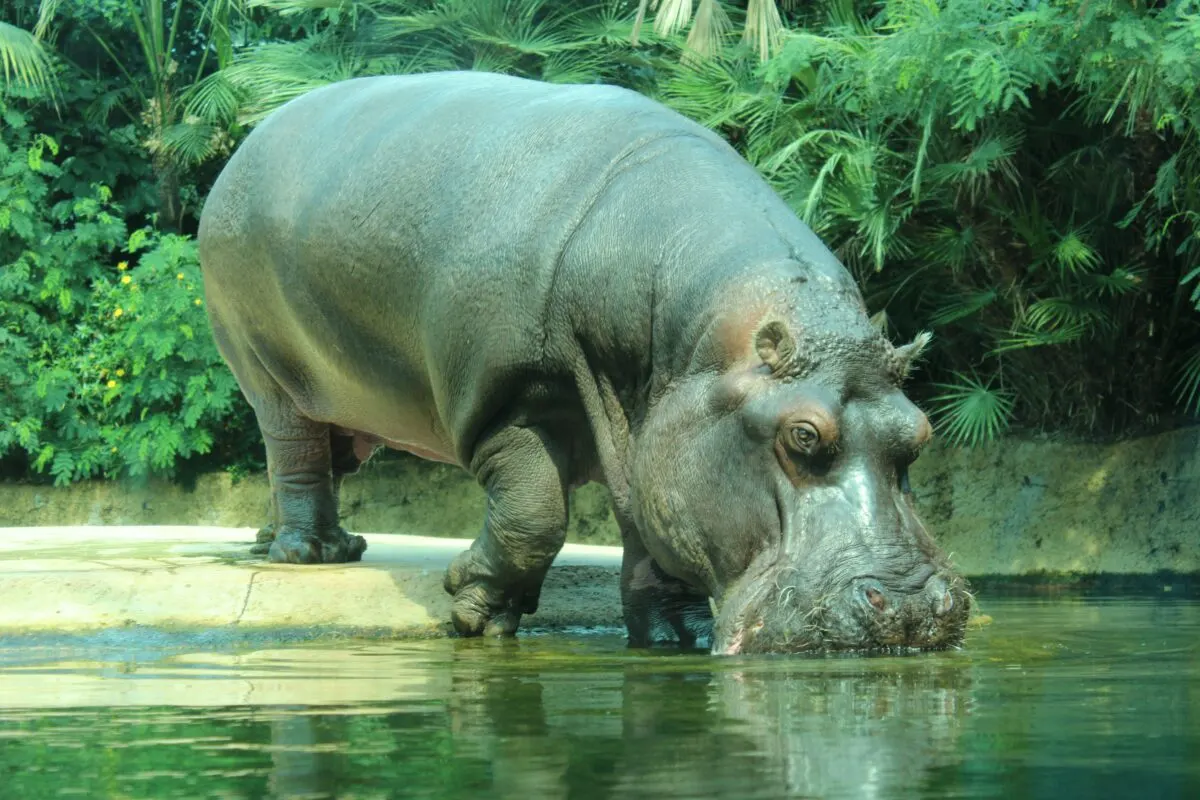In this post, we are going to compare two magnificent animals, the Puma vs. Hippo
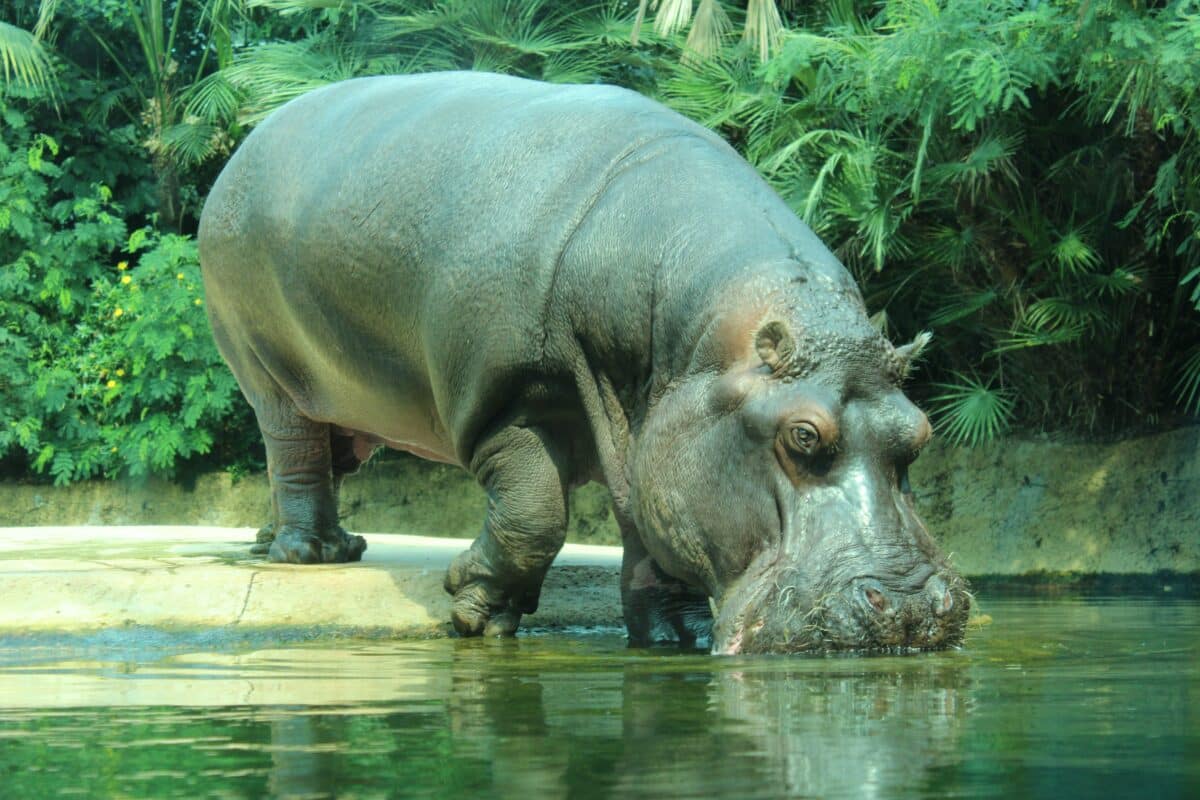
When comparing two fascinating animals in the animal kingdom, the puma and the hippopotamus are two species that could not be more different.
While one is a sleek and agile predator that stalks the forests and mountains of the Americas, the other is a massive and powerful herbivore that spends most of its time submerged in the rivers and lakes of Africa.
In this article, we will compare the unique features and characteristics of both animals, including their physical attributes, hunting and feeding behaviors, and social structures, to better understand what sets them apart and makes them such remarkable creatures.
Scientific Classification
| Characteristics | Puma | Hippo |
| Kingdom | Animalia | Animalia |
| Phylum | Chordata | Chordata |
| Class | Mammalia | Mammalia |
| Order | Carnivora | Artiodactyla |
| Family | Felidae | Hippopotamidae |
| Genus | Puma | Hippopotamus |
| Species | Puma Concolor | Hippopotamus Amphibius |
As we can see, pumas and hippos belong to the animal kingdom and the Chordata phylum, meaning they are both vertebrates with a backbone. They also belong to the mammalian class, indicating that they are warm-blooded animals that produce milk to nurse their young.
However, there are some differences in their scientific classification. Pumas belong to the Carnivora order and the Felidae family, meaning they are predatory animals and are closely related to other big cats, such as lions and tigers. On the other hand, Hippos belong to the Artiodactyla order and the Hippopotamidae family, indicating that they are ungulate mammals with hooves and are more closely related to pigs and deer than to cats.
Pumas and hippos have similarities in their scientific classification and key differences, particularly in their order and family classification.
Physical Characteristics: Puma vs. Hippo
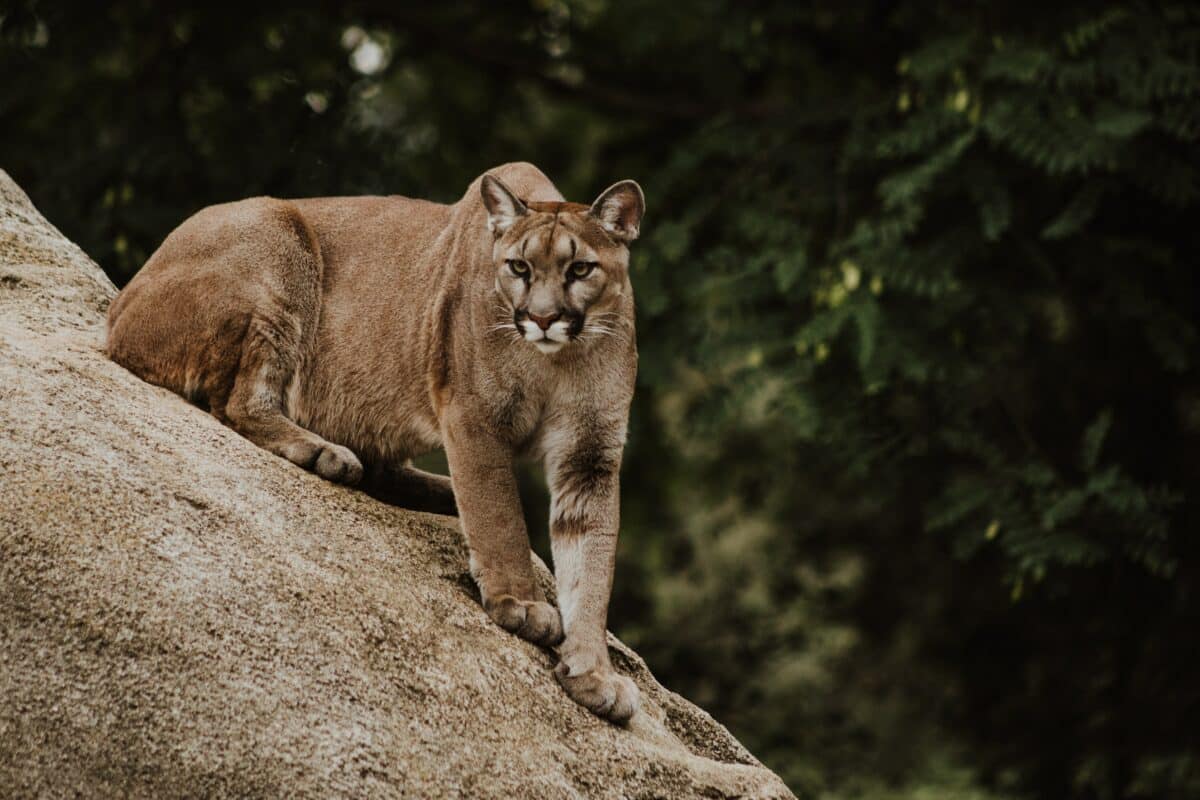
Puma
- Pumas, also known as mountain lions or cougars, are members of the cat family Felidae.
- They have a muscular build and are medium-sized. Male pumas’ weight can increase to 220 pounds and females to 140 pounds.
- Their fur is typically reddish-brown with black spots on their back and tail.
- They have short fur and a long tail which helps them balance running and jumping.
- Pumas have excellent vision, hearing, and smell, which makes them great hunters.
Hippo
- Hippos are large herbivores known for their massive size and barrel-shaped bodies.
- Their weight can go to 3,500 pounds, and their height to 15 feet long.
- They have thick, hairless skin that is grayish-brown in color.
- Hippos have large heads with broad snouts and small eyes and ears.
- They have short legs, and their toes are webbed, which helps in swimming.
- Hippos have poor eyesight but excellent hearing and smell, which helps them detect danger and find food.
Hunting and Feeding Behavior

Puma
- Pumas are solitary hunters and prey on various animals, including deer, elk, rabbits, and rodents.
- They are ambush predators and use their stealth and speed to stalk their prey and pounce on them when they least expect it.
- Pumas will sometimes kill animals that are larger than themselves and will store the extra meat in trees for later consumption.
Hippo
- Hippos are herbivores and spend most of their day grazing on grasses and other vegetation.
- They are semi-aquatic animals and often graze in the water or on the banks of rivers and lakes.
- Hippos have a unique ability to hold their breath for up to five minutes, which allows them to feed underwater.
- Despite their herbivorous diet, hippos are known to be quite aggressive and will attack humans and other animals if they feel threatened.
Socialization
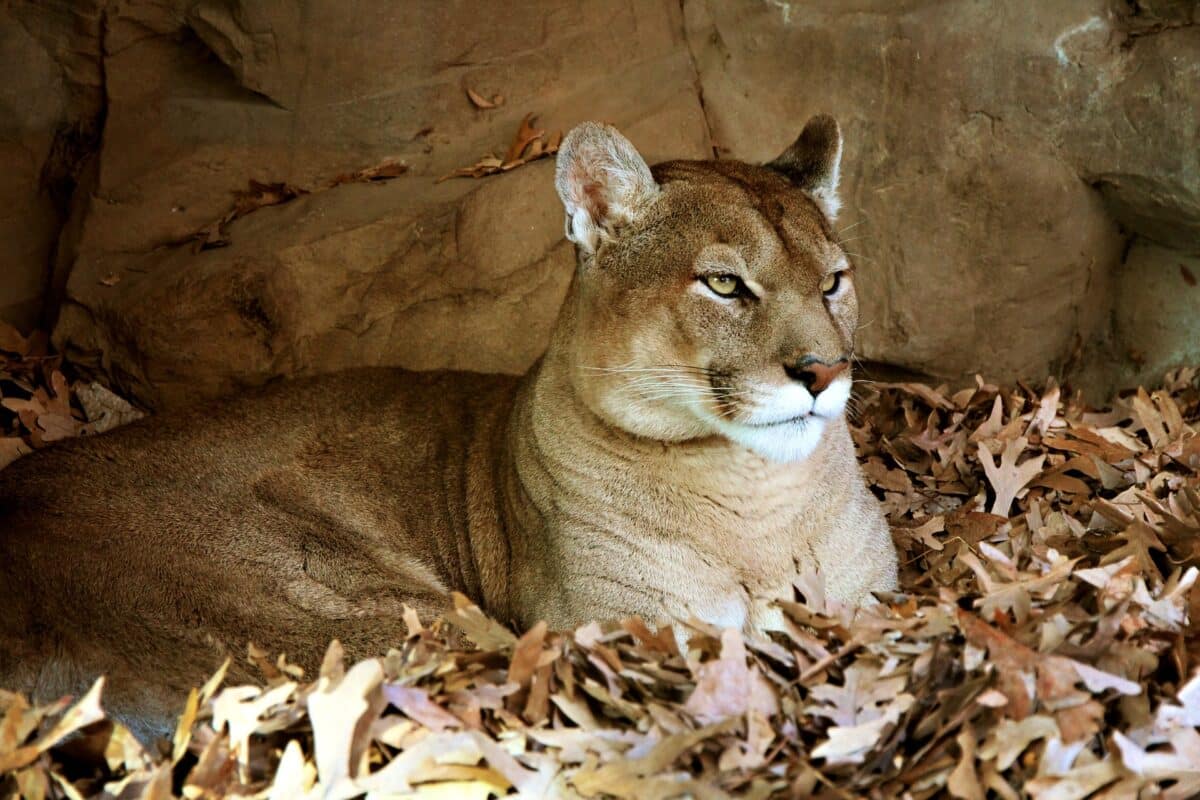
Puma
- Pumas are solitary animals. They only meet or connect during mating season.
- Male pumas have large territories ranging from 50 to 150 square miles, while females have smaller regions of around 10 to 20 square miles.
- Pumas mark their territory with urine, feces, and scratching on trees and rocks.
Hippo
- Hippos are social animals. They prefer living in groups called pods, consisting of up to 30 individuals.
- Hippos communicate through vocalizations, gestures, and scent marking.
Habitat
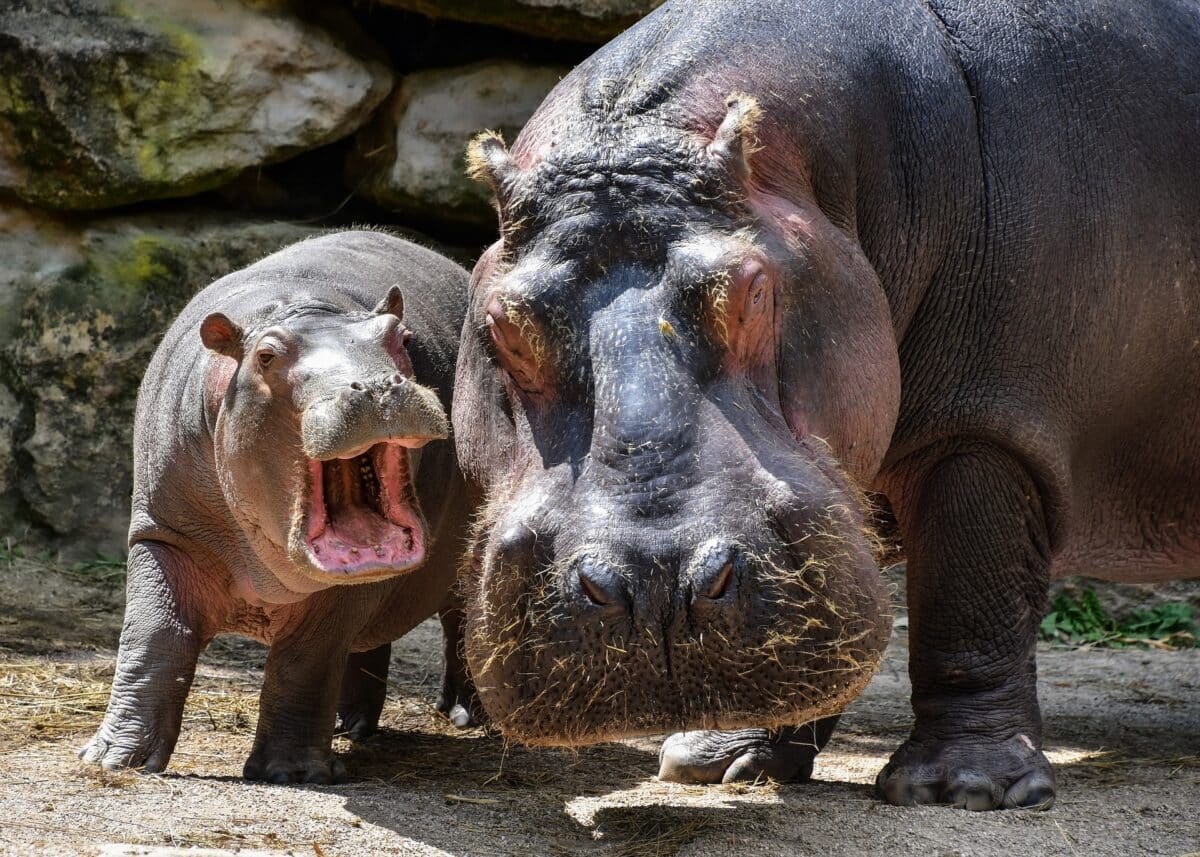
Puma and Hippos have vastly different habitats. Let’s look at the diverse habitats of the Puma vs. Hippo.
Puma
- Pumas are native to the Americas and can be found in various habitats, such as grasslands, forests, and mountains.
- They are adaptable animals and can live in a range of elevations from sea level to 14,000 feet.
- Pumas are known to be territorial and will establish their range in areas with suitable prey populations and cover for stalking and hiding.
Hippo
- Hippos are native to Africa and are semi-aquatic animals.
- They can be found in rivers, lakes, and swamps across the continent and prefer shallow water with mud banks and grassy areas nearby.
- Hippos will leave the water at night to graze on nearby vegetation but always return to the water during the day to keep calm and protect their skin from the sun.
Life Cycle and Reproduction
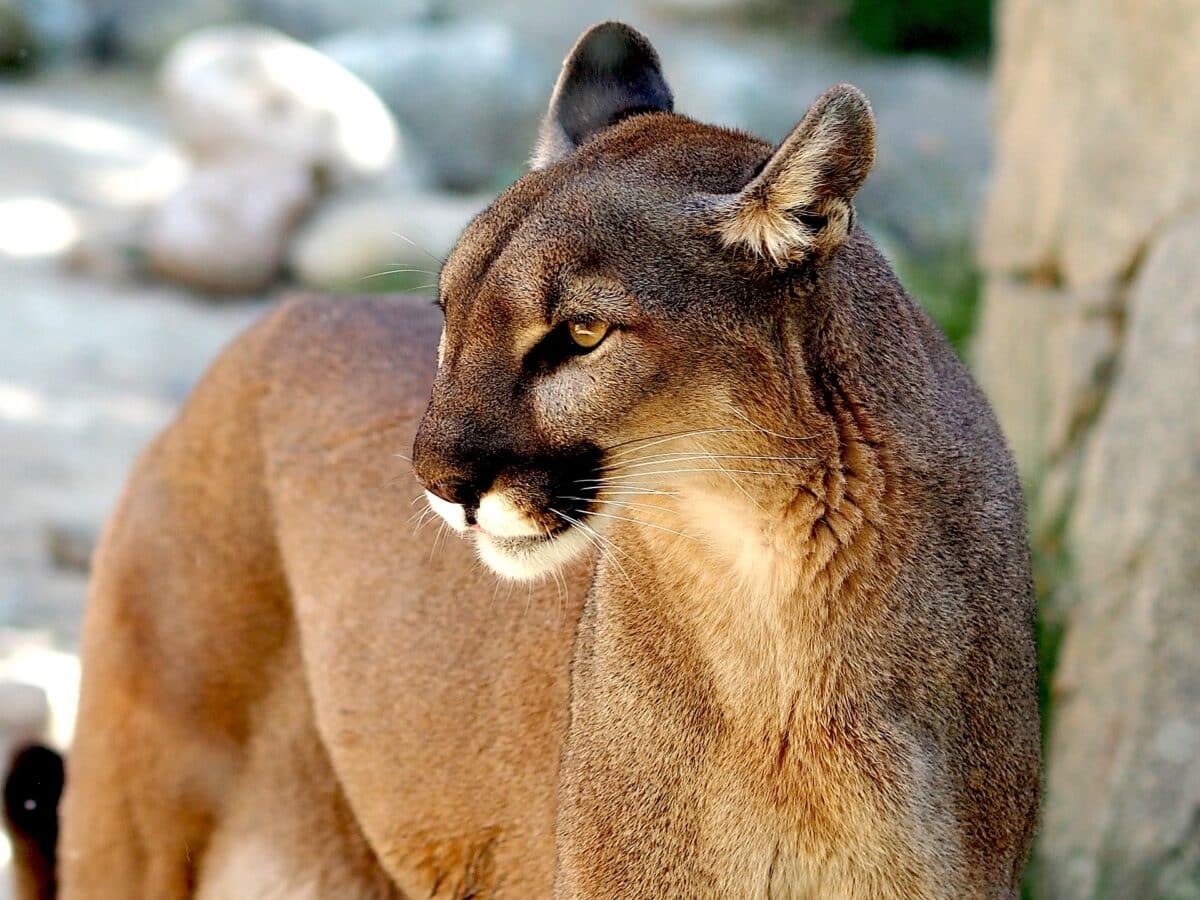
Puma
- Pumas only come together from December to March during mating season.
- During this time, males will compete for the right to mate with females, and the most potent male will typically mate with several females.
- After a gestation period of around 90 days, the female will give birth to a litter of one to six cubs, which she will raise on her own.
- Puma cubs are born blind and helpless and will stay with their mother for around two years before becoming independent.
Hippo
- Hippos are social animals and will mate year-round.
- Males will establish territories near the water and mate with females entering their territory.
- Once the gestation period is over, the mother will nurse for up to a year.
- Hippos have a unique reproductive strategy in which females will leave the water to give birth and return to the water with their calf after a few days.
FAQ
It is doubtful for a puma to kill a fully grown hippopotamus, weighing up to 3,000 pounds and having thick, tough skin. Pumas are relatively small and agile predators, and their hunting strategies are more suited to catching smaller prey like deer, rabbits, and rodents.
Hippos’ aggressive behavior and powerful jaws are the reason for their popularity, and they can take a deadly bite with their powerful jaws. In a confrontation with a puma, a hippo would likely use its size and strength to intimidate or attack the predator, making it difficult for the puma to inflict serious harm.
No, pumas are found in various habitats across North and South America, including forests, deserts, and grasslands. Conversely, hippos are primarily found in sub-Saharan Africa, where they inhabit rivers, lakes, and swamps.
A puma can prey on a young or weakened hippopotamus, but even a baby hippo can weigh several hundred pounds and may be too large and aggressive for a puma to handle. Additionally, adult hippos are fiercely protective of their young and may attack any predator that poses a threat.
The International Union for Conservation of Nature (IUCN) lists pumas and hippos as species of the least concern. While pumas face habitat loss and hunting threats, their populations are generally stable. Hippos, on the other hand, have experienced declines in some areas due to habitat destruction, hunting, and poaching for their meat and ivory teeth.
Wrap-Up
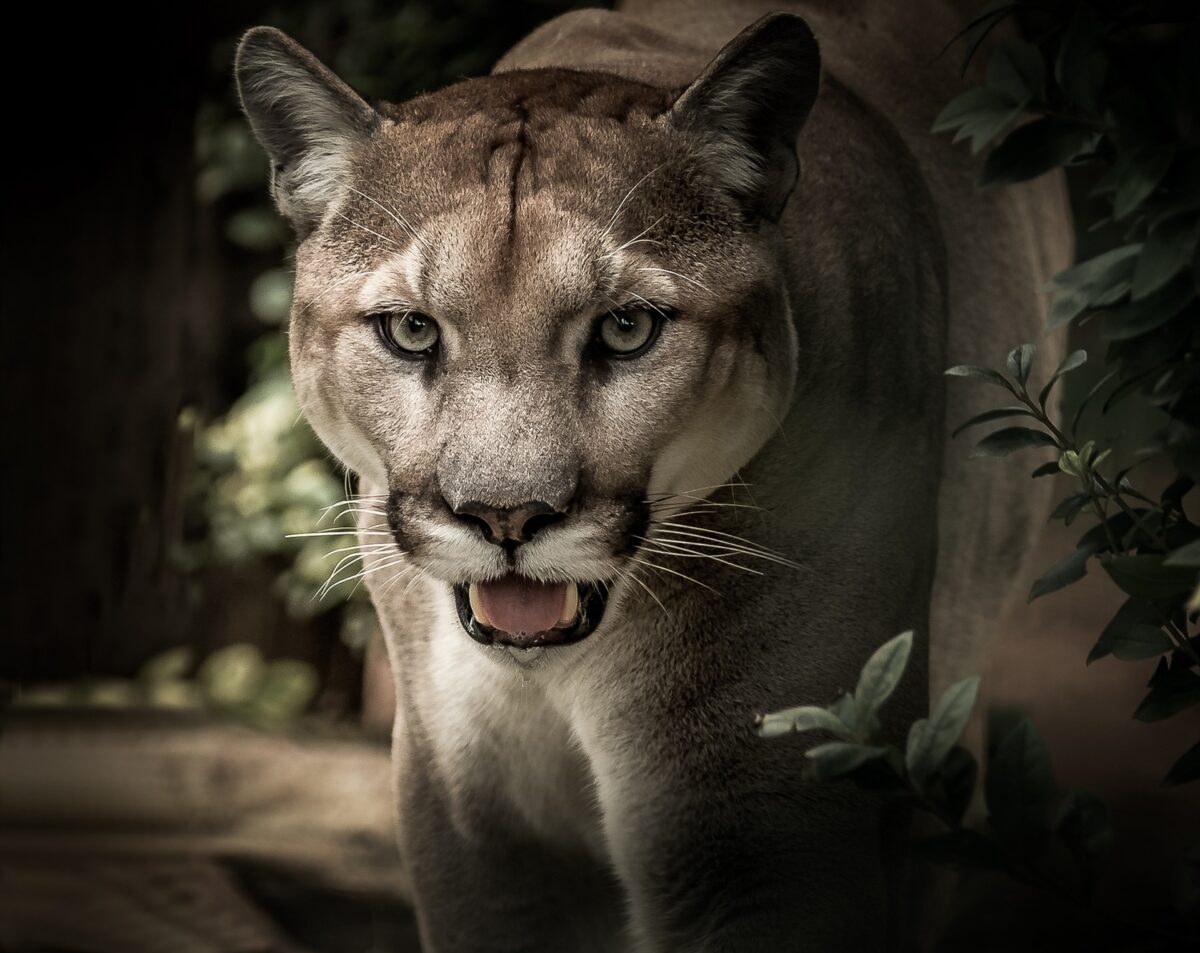
In conclusion, in our comparison of the Puma vs. Hippo, it is clear that they are very different animals that inhabit other parts of the world and have unique and distinct characteristics that make them fascinating creatures.
While pumas are solitary hunters with excellent senses and agility, hippos are massive herbivores with impressive underwater abilities and social structures.
Despite their differences, both animals play essential roles in their respective ecosystems and are truly remarkable in their ways.
Thanks for reading this article on the Puma vs. Hippo, next up, Gorilla vs. Eagle and Lion Vs. Hippo.
Join our Forum for free today!

- 93-Million-Year-Old Crocodile Fossil Discovered With Baby Dinosaur in Its Stomach - July 23, 2024
- Woman Captured Howling with Gigantic White Wolf in Beautiful Footage - July 23, 2024
- Recent Study Reveals Hippos Can Momentarily Fly - July 23, 2024

